pH/ORP/ION Series
-

CS6518 Calcium ion Sensor
The calcium electrode is a PVC sensitive membrane calcium ion selective electrode with organic phosphorous salt as the active material, used to measure the concentration of Ca2+ ions in the solution. -

CS6720 Nitrate electrode
All of our Ion Selective (ISE) electrodes are available in many shapes and lengths to fit a wide variety of applications.
These Ion Selective Electrodes are designed to work with any modern pH/mV meter, ISE/concentration meter, or suitable on-line instrumentation. -
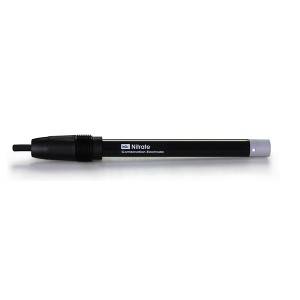
CS6520 Nitrate electrode
All of our Ion Selective (ISE) electrodes are available in many shapes and lengths to fit a wide variety of applications.
These Ion Selective Electrodes are designed to work with any modern pH/mV meter, ISE/concentration meter, or suitable on-line instrumentation. -
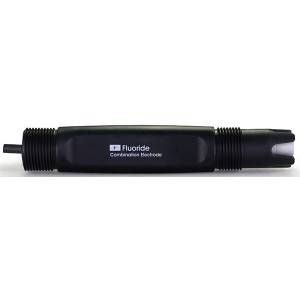
CS6710 Fluoride Ion Sensor
The fluoride ion selective electrode is a selective electrode sensitive to the concentration of fluoride ion, the most common one is the lanthanum fluoride electrode.
Lanthanum fluoride electrode is a sensor made of lanthanum fluoride single crystal doped with europium fluoride with lattice holes as the main material. This crystal film has the characteristics of fluoride ion migration in the lattice holes.
Therefore, it has very good ion conductivity. Using this crystal membrane, the fluoride ion electrode can be made by separating two fluoride ion solutions. The fluoride ion sensor has a selectivity coefficient of 1.
And there is almost no choice of other ions in the solution. The only ion with strong interference is OH-, which will react with lanthanum fluoride and affect the determination of fluoride ions. However, it can be adjusted to determine the sample pH <7 to avoid this interference. -
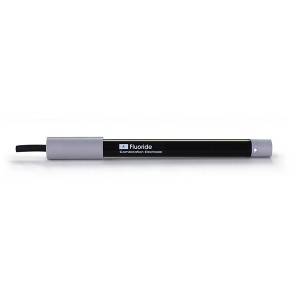
CS6510 Fluoride Ion Sensor
The fluoride ion selective electrode is a selective electrode sensitive to the concentration of fluoride ion, the most common one is the lanthanum fluoride electrode.
Lanthanum fluoride electrode is a sensor made of lanthanum fluoride single crystal doped with europium fluoride with lattice holes as the main material. This crystal film has the characteristics of fluoride ion migration in the lattice holes.
Therefore, it has very good ion conductivity. Using this crystal membrane, the fluoride ion electrode can be made by separating two fluoride ion solutions. The fluoride ion sensor has a selectivity coefficient of 1.
And there is almost no choice of other ions in the solution. The only ion with strong interference is OH-, which will react with lanthanum fluoride and affect the determination of fluoride ions. However, it can be adjusted to determine the sample pH <7 to avoid this interference. -
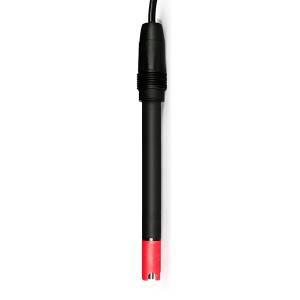
CS1668 pH Sensor
Designed for viscous fluids, protein environment, silicate, chromate, cyanide, NaOH, seawater, brine, petrochemical, natural gas liquids, high-pressure environment. -

CS2668 ORP Sensor
Designed for Hydrofluoric acid environment.
The electrode is made of ultra-bottom impedance-sensitive glass film, and it also has the characteristics of fast response, accurate measurement, good stability, and not easy to hydrolyze in the case of hydrofluoric acid environment media. The reference electrode system is a non-porous, solid, non-exchange reference system. Completely avoid various problems caused by the exchange and blockage of the liquid junction,such as the reference electrode is easy to be polluted, reference vulcanization poisoning, reference loss and other problems. -
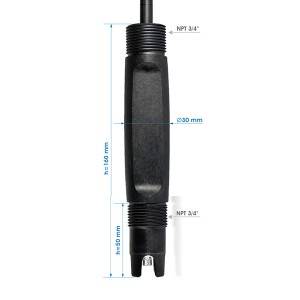
CS2733 ORP Sensor
Designed for common water quality.
Double salt bridge design, double layer seepage interface, resistant to medium reverse seepage.
The ceramic pore parameter electrode oozes out of the interface and is not easy to be blocked, which is suitable for monitoring of common water quality environmental media.
High-strength glass bulb design, the glass appearance is stronger.
The electrode adopts low noise cable, the signal output is farther and more stable
Large sensing bulbs increase the ability to sense hydrogen ions, and perform well in common water quality environment media. -
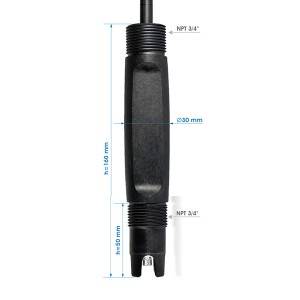
CS2701 ORP Electrode
Double salt bridge design, double layer seepage interface, resistant to medium reverse seepage.
The ceramic pore parameter electrode oozes out of the interface and is not easy to be blocked, which is suitable for monitoring of common water quality environmental media.
High-strength glass bulb design, the glass appearance is stronger.
The electrode adopts low noise cable, the signal output is farther and more stable
Large sensing bulbs increase the ability to sense hydrogen ions, and perform well in common water quality environment media. -
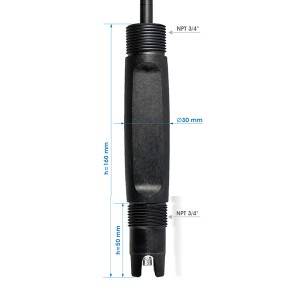
CS2700 ORP Sensor
Double salt bridge design, double layer seepage interface, resistant to medium reverse seepage.
The ceramic pore parameter electrode oozes out of the interface and is not easy to be blocked, which is suitable for monitoring of common water quality environmental media.
High-strength glass bulb design, the glass appearance is stronger.
The electrode adopts low noise cable, the signal output is farther and more stable
Large sensing bulbs increase the ability to sense hydrogen ions, and perform well in common water quality environment media. -
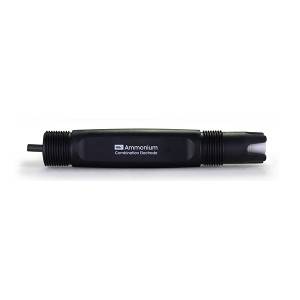
CS6714 Ammonium Ion Sensor
Ion selective electrode is a kind of electrochemical sensor that uses membrane potential to measure the activity or concentration of ions in the solution. When it comes into contact with the solution containing the ions which are to be measured, it will generate contact with the sensor at the interface between its sensitive membrane and the solution. Ion activity is directly related to membrane potential. Ion selective electrodes are also called membrane electrodes. This type of electrode has a special electrode membrane that selectively responds to specific ions. The relationship between the potential of the electrode membrane and the ion content to be measured conforms to the Nernst formula. This type of electrode has the characteristics of good selectivity and short equilibrium time, making it the most commonly used indicator electrode for potential analysis. -
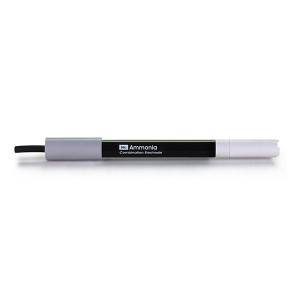
CS6514 Ammonium ion Sensor
Ion selective electrode is a kind of electrochemical sensor that uses membrane potential to measure the activity or concentration of ions in the solution. When it comes into contact with the solution containing the ions which are to be measured, it will generate contact with the sensor at the interface between its sensitive membrane and the solution. Ion activity is directly related to membrane potential. Ion selective electrodes are also called membrane electrodes. This type of electrode has a special electrode membrane that selectively responds to specific ions. The relationship between the potential of the electrode membrane and the ion content to be measured conforms to the Nernst formula. This type of electrode has the characteristics of good selectivity and short equilibrium time, making it the most commonly used indicator electrode for potential analysis. -
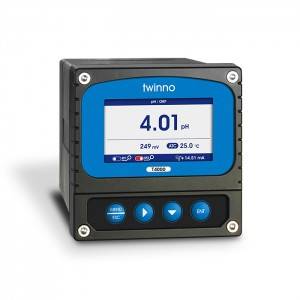
Online pH/ORP Meter T4000
Industrial on-line PH/ORP meter is an on-line water quality monitoring and control instrument with microprocessor.
PH electrodes or ORP electrodes of different types are widely used in power plant, petrochemical industry, metallurgical electronics, mining industry, paper industry, biological fermentation engineering, medicine, food and beverage, environmental water treatment, aquaculture, modern agriculture, etc. -
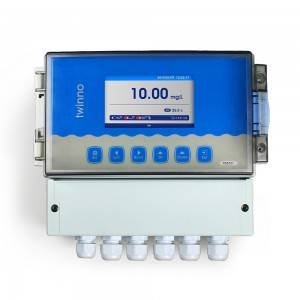
Online Ion Meter T6510
Industrial online Ion meter is an online water quality monitoring and control instrument with microprocessor. It can be equipped with Ion
selective sensor of Fluoride, Chloride, Ca2+, K+, NO3-, NO2-, NH4+, etc.The instrument is widely used in industrial waste water, surface water, drinking water, sea water, and industrial process control ions on-line automatic testing and analysis, etc. Continuously monitor and control Ion concentration and temperature of aqueous solution. -
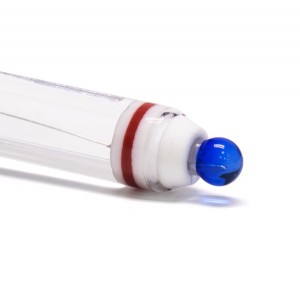
CS1544CDB/CS1544CDBT PH Meter 0-14 Range pH Calcium Hydroxide Electrode Probe
ph electrode (ph sensor) consists of a pH-sensitive membrane, double-junction reference GPT medium electrolyte, and a porous ,large-area PTFE salt bridge. The plastic case of the electrode is made of modified PON, which can withstand high temperature up to 100°C and resist strong acid and strong alkali corrosion. It is widely used in wastewater treatment and fields including mining and smelting, papermaking, paper pulp, textiles, petrochemical industry, process of semiconductor electronic industry and downstream engineering of biotechnology.



